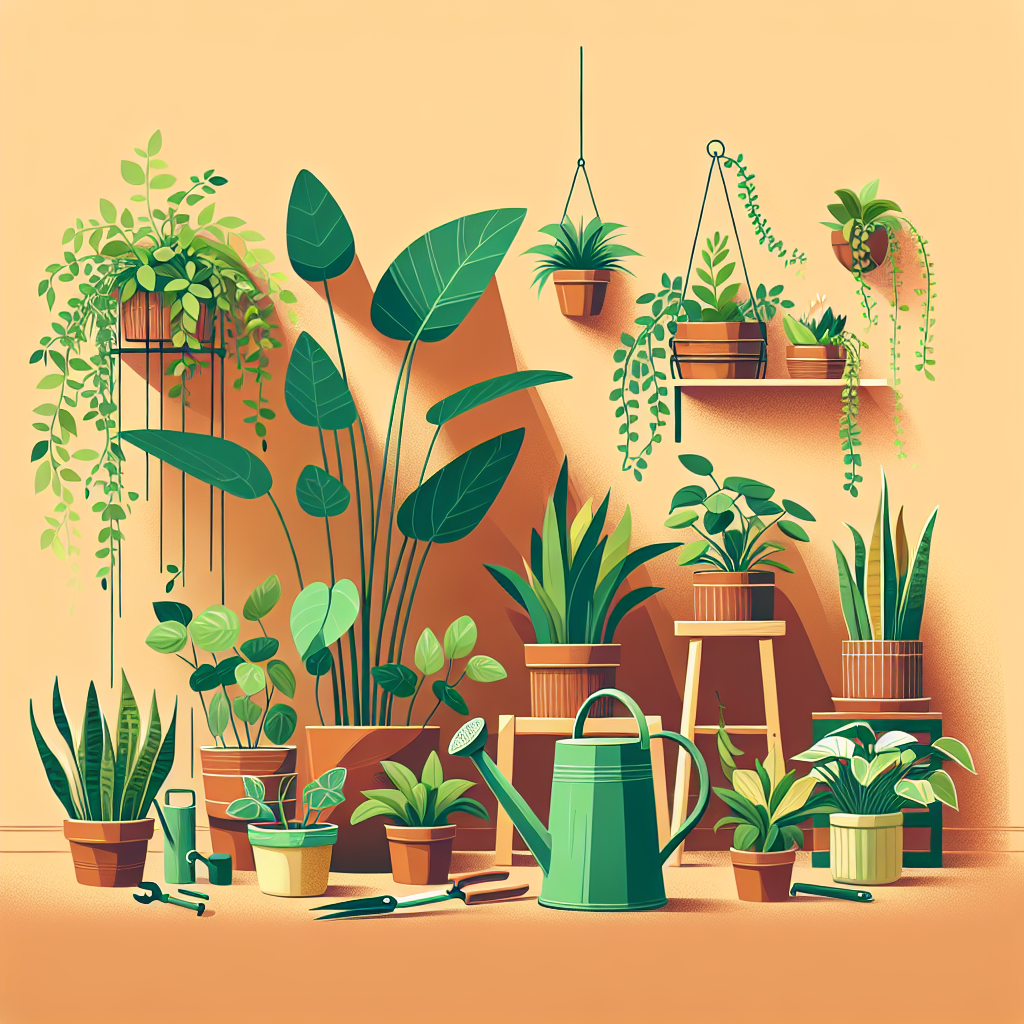Hey there, fellow plant lover and penny pincher! If you’re anything like me, you get a special kind of thrill when you snag a bargain that brings both life and style to your indoor spaces. Today, I’m going to spill the soil—so to speak—on some of the best low-cost indoor plants that’ll add a splash of green to your home without breaking the bank. Plus, I’ll share some of my top tips for keeping them happy and thriving. So grab your gardening gloves, and let’s get started!
Finding Your Frugal Foliage: The Best Budget-Friendly Indoor Plants
First things first, let’s talk plants! Here are my go-to picks when wallet-friendliness is as crucial as leafiness:
The Trusty Snake Plant (Sansevieria)
Talk about hard to kill! These guys are like the tank of the houseplant world. With their striking, upright leaves, they make a bold statement without demanding too much in return. Water them every couple of weeks (or when you remember), and they’ll be just fine. Plus, they’re champions at purifying the air.
Chill Philodendron
Philodendrons are the chill buddies in the world of indoor plants. Their cascading vines are perfect for shelves and hanging pots. They’re not fussy about light, and they’ll forgive you if you miss a watering here and there. Just give them a drink when their soil feels dry to the touch.
Perky Peace Lilies (Spathiphyllum)
Want flowers on a dime? Peace lilies to the rescue! These beauties are low-light lovers and will even produce cute little white blooms. They’ll sag a bit when they’re thirsty—essentially telling you, “Hey, I could use a drink!”
Zany ZZ Plants (Zamioculcas zamiifolia)
ZZ Plants are like the cool, low-maintenance friend we all wish we had. They can handle low light, infrequent waterings, and are pretty much indestructible. Their glossy, dark green leaves will stay perky with minimal effort.
Cheerful Chinese Evergreen (Aglaonema)
The Chinese Evergreen is a decor darling, and for good reason. Its variegated leaves can add a pop of color, and it’s adaptable to various lighting conditions. Plus, they’re relatively slow-growing, so you don’t need to worry about them outgrowing their spot too quickly.
Ensuring Your Green Friends Thrive: Indoor Plant Care 101
Alright, let’s get down to the nitty-gritty of keeping those leafy friends healthy:
Let There Be Light… But Not Too Much
Indoor plants generally don’t require a ton of sunlight. In fact, direct sunlight can be a bit of a faux pas for many types. Most of our bargain green buddies prefer bright, indirect light. So, park them near a window, but keep them out of the direct sun’s path. You don’t want them getting a sunburn!
Water Wisely
Plants are like people; they need water to survive, but not so much that they drown. Each plant has its own hydration needs, but a good rule of thumb is to check the soil. If the top inch is dry, it’s time to water. And no lazy watering—make sure you’re getting to the roots!
To Feed, or Not to Feed
Fertilizing is one of those things that can feel a tad complicated, but it’s simpler than it seems. Most indoor plants benefit from a little nutrient boost during their growing season (typically spring and summer). A general houseplant fertilizer used as directed should do the trick.
Pots with Pizzazz and Purpose
The pot is not just a fashion statement—it’s the home of the root system! Make sure your plant’s pot has drainage holes to prevent water from pooling at the bottom. Root rot is real, and it’s a total mood killer for your leafy pals.
Propagating Your Plants: Multiply Your Greenery for Free
One of the best things about these cost-effective plants? You can turn one purchase into many through propagation! Snip off a healthy piece, pop it in some water or soil, and with a bit of patience, you’ll have a brand-new plant baby. It’s like plant cloning, but totally legal.
Plant Troubleshooting: Keeping Your Indoor Jungle Low-Stress
Alright, so things don’t always go according to plan, I get it. Here are some quick fixes for common issues:
– Yellow leaves? Could be too much love (water), buddy. Ease up on the H2O.
– Droopy plants? They might be parched. Give them a good drink and they should perk right up.
– Gnats flying around? Yikes, nobody invited those pests. Time to change out the soil and maybe let it dry out a bit more between waterings.
Now, onto an important part of our convo—those questions you might be pondering.
FAQs on Low-Cost Indoor Plants and Their Care
Q: How often should I repot my indoor plants?
A: Most plants like a little room to grow, but they don’t need new digs too often. Every couple of years should suffice, or when you notice the roots are starting to look a bit cramped.
Q: Are there any good low-cost resources for plant care?
A: Definitely! There’s a jungle of information online—blogs, care guides, and social media groups full of fellow plant enthusiasts eager to swap tips and tricks.
Q: Can indoor plants really improve air quality?
A: You bet! NASA even did a study on it. While you’d need a whole lot of plants to make a significant impact on air quality, every little bit helps.
Q: What do I do if I spot pests?
A: Don’t panic! Many plant pests can be dealt with using a little soapy water or neem oil. Stay vigilant and check your plants regularly for uninvited guests.
And that’s a wrap for our low-cost indoor plant guide. Remember, a bit of TLC goes a long way in the plant world. Take care of your leafy investments, and they’ll pay you back in spades—or should I say, in sprouts? Keep growing, keep thriving, and let’s turn those brown thumbs green together!

Leave a Reply